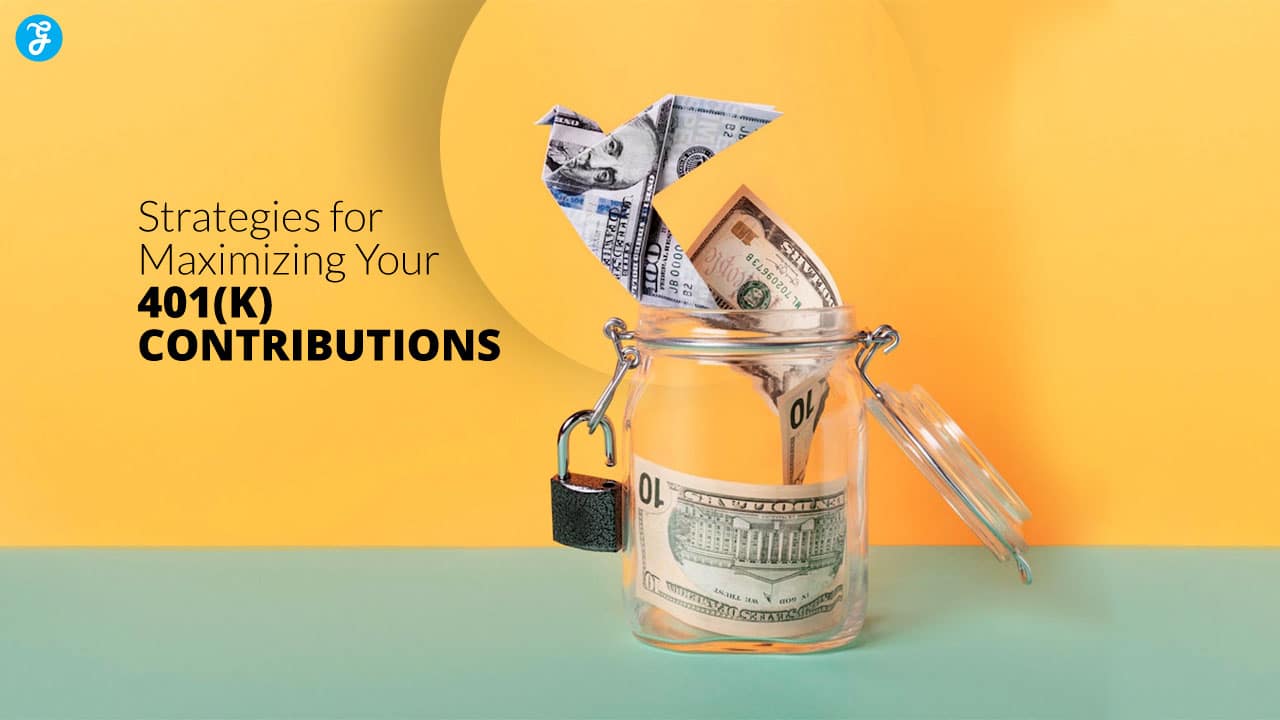Planning for retirement is crucial, and a 401(k) can be a powerful tool to help you save. Many people don’t take full advantage of this benefit, missing out on potential growth. By using smart strategies, you can boost your 401(k) savings and set yourself up for a more comfortable retirement.
Your 401(k) offers tax benefits and often includes employer matching, which is like free money for your future. Making the most of these perks can significantly impact your long-term financial health.
This article will explore 20 ways to maximize your 401(k) contributions and get the most out of your retirement savings plan.
1. Max out employer match contributions
Your 401(k) match is free money. Don’t leave it on the table. Find out how much your employer will match. It’s often a percentage of your salary.
Contribute at least enough to get the full match. If your employer matches 5% of your pay, try to put in 5% or more. This doubles your savings right away.
Check if there’s a vesting period. This means you might need to stay at your job for a while to keep the full match. Plan accordingly.
Some companies offer a bigger match for higher contributions. Ask about this. You might be able to get even more free money.
Remember, the match is on top of what you save. It doesn’t count towards your annual contribution limit. This lets you save even more for retirement.
Review your contribution amount yearly. As your pay goes up, your contributions should too. This helps you keep getting the full match.
If money is tight, start small and increase over time. Even a 1% boost each year can make a big difference. The key is to get that match.
2. Automatically increase contribution percentage
Setting up automatic increases for your 401(k) contributions is a smart move. Many plans offer this feature. It allows you to boost your savings without much effort.
You can choose to raise your contribution rate by 1% or more each year. This often coincides with annual pay raises. As your income grows, so does your retirement savings.
The beauty of this approach is that you won’t miss the extra money. It’s taken out before you see your paycheck. Over time, these small increases can add up to big savings.
Consider starting with a 1% annual increase. If you can handle more, go for it. The key is to find a balance that works for your budget. Remember, you can always adjust it later if needed.
Automatic increases help you take advantage of compound interest. The earlier you start, the more time your money has to grow. This can make a big difference in your retirement nest egg.
Check with your plan administrator to set up this feature. It’s usually a simple process that can be done online or with a quick phone call. Take this step today to boost your future savings.
3. Utilize catch-up contributions if over 50
Are you 50 or older? You can boost your 401(k) savings with catch-up contributions. These let you put extra money into your account above the regular limits.
For 2024, you can add $7,500 more to your 401(k) on top of the standard $23,000 limit. This means you can contribute up to $30,500 total.
Catch-up contributions are a great way to build your nest egg faster. If you start at age 50 and max out your catch-ups each year, you could add over $100,000 to your retirement savings by age 65.
Think about your budget and see if you can increase your contributions. Even if you can’t max out, every extra dollar helps. The more you save now, the more time your money has to grow.
Talk to your employer about setting up catch-up contributions. You may need to fill out some paperwork or adjust your payroll deductions. Don’t miss out on this chance to supercharge your retirement savings.
4. Review your 401(k) fees
Fees can eat into your 401(k) returns over time. It’s important to know what you’re paying.
Check your plan documents or ask your HR department for a breakdown of fees. Look for administrative fees and investment expenses.
Compare the fees to industry averages. If they seem high, talk to your employer about lower-cost options.
Consider switching to lower-fee investment choices within your plan. Index funds often have lower fees than actively managed funds.
Even small differences in fees can have a big impact over decades. A 1% difference could mean thousands of dollars less at retirement.
Don’t ignore fees, but also don’t make decisions based only on costs. Consider the overall value of your 401(k) plan and its investment options.
5. Invest in index funds
Index funds are a smart choice for your 401(k). These funds track a market index, like the S&P 500. They offer broad market exposure at a low cost.
Index funds have lower fees than actively managed funds. This means more of your money stays invested and grows over time. You don’t have to worry about picking individual stocks or timing the market.
These funds are easy to understand and manage. They provide instant diversification across many companies. This helps spread out your risk and can lead to more stable returns.
Many 401(k) plans offer index fund options. Look for them in your plan’s investment choices. Consider including both stock and bond index funds to balance your portfolio.
Over long periods, index funds often outperform actively managed funds. This makes them a good fit for retirement savings. You can set them up and let them grow with minimal effort.
Remember to check your fund’s expense ratio. Lower is better. This small detail can make a big difference in your returns over many years.
6. Diversify your investment options
When it comes to your 401(k), don’t put all your eggs in one basket. Spread your money across different types of investments to lower your risk.
Most 401(k) plans offer a range of options. These might include stocks, bonds, and mutual funds. Each type has its own pros and cons.
Stocks can give you higher returns but come with more risk. Bonds are usually safer but may grow more slowly. Mutual funds offer a mix of investments in one package.
Think about your age and when you plan to retire. If you’re younger, you might choose more stocks. As you get older, you may want to add more bonds.
Many 401(k) plans have target-date funds. These automatically adjust your mix of investments as you get closer to retirement. They can be a good choice if you’re not sure how to divide your money.
Don’t forget to look at the fees for each investment option. Lower fees can help your money grow faster over time.
Review your investment mix at least once a year. You may need to make changes as your life or the market changes.
7. Understand your 401(k) plan’s vesting schedule
A vesting schedule decides when you own the money your employer puts in your 401(k). It’s key to know this schedule.
There are three main types of vesting schedules. Immediate vesting means you own all the money right away. Cliff vesting gives you full ownership after a set time. Graded vesting increases your ownership bit by bit over time.
Your plan might use any of these. Check your plan documents or ask HR to find out which one applies to you.
Remember, the money you put in is always 100% yours. Vesting only affects what your employer adds.
Knowing your schedule helps you plan. If you’re close to being fully vested, it might be smart to stay at your job a bit longer. This way, you don’t miss out on free money.
Some plans have shorter vesting periods to keep good workers. Others have longer ones to encourage people to stay.
Keep track of your vesting progress. It can make a big difference in your retirement savings. Don’t leave money on the table by quitting too soon.
8. Avoid early withdrawals
Taking money out of your 401(k) before retirement can hurt your savings. It’s best to leave your funds untouched until you’re at least 59½ years old.
Early withdrawals often come with a 10% penalty. You’ll also have to pay income taxes on the amount you take out. This can really eat into your retirement savings.
There are some exceptions to the penalty rule. These include hardship withdrawals for things like medical expenses or avoiding foreclosure. But even then, you’ll still owe taxes on the money.
Instead of withdrawing early, look for other ways to cover unexpected costs. You could use an emergency fund or take out a loan. These options won’t impact your retirement savings as much.
If you must take money from your 401(k), consider a loan instead of a withdrawal. You’ll have to pay the money back, but you won’t face penalties or taxes if you follow the rules.
Remember, your 401(k) is for your future. Keeping the money invested allows it to grow over time. This can lead to a much larger nest egg when you retire.
9. Contribute to a Roth 401(k) if eligible
A Roth 401(k) can be a smart choice for your retirement savings. It allows you to contribute after-tax dollars to your account. This means you won’t get a tax break now, but your money grows tax-free.
When you retire, you can withdraw your funds without paying taxes. This can be a big advantage if you think you’ll be in a higher tax bracket later.
For 2024, you can put up to $23,000 in your Roth 401(k) if you’re under 50. If you’re 50 or older, you can add an extra $7,500. This brings your total to $30,500.
Not all employers offer Roth 401(k)s. Check with your company to see if it’s an option for you. If it is, think about your current and future tax situations.
A Roth 401(k) might be good if you’re young and expect your income to rise. It could also work well if you think tax rates will go up in the future.
Remember, you can split your contributions between a traditional and Roth 401(k). This gives you tax diversity in retirement. Talk to a tax pro to figure out the best mix for your situation.
10. Seek professional financial advice
Getting help from a money expert can boost your 401(k) savings. These pros know the ins and outs of retirement plans and can give you personalized tips.
A financial advisor can look at your whole financial picture. They’ll consider your age, income, and goals to create a plan just for you. This can help you make smart choices about your 401(k).
These experts can also explain complex investment options. They’ll help you understand which funds might work best for your situation. This knowledge can lead to better returns over time.
Advisors stay up-to-date on tax laws and 401(k) rules. They can show you how to use these rules to your advantage. This might help you save more money in the long run.
Remember, not all advice is created equal. Look for a certified financial planner or someone with special retirement planning skills. Make sure they have a good track record and positive reviews from other clients.
You don’t have to meet with an advisor often. Even a yearly check-in can help keep your 401(k) on track. Think of it as a tune-up for your retirement savings.
11. Set up an automatic increase annually
Want to boost your 401(k) savings without much effort? Set up an automatic increase each year. This means your contributions will go up a bit every 12 months.
Many 401(k) plans offer this feature. It’s often called “auto-escalation.” You can choose how much you want your contributions to rise. Even a small bump, like 1% per year, can make a big difference over time.
This strategy helps you save more as your income grows. It’s a painless way to build your nest egg. You might not even notice the extra money coming out of your paycheck.
Remember to check your plan’s limits. Make sure your increases won’t put you over the maximum contribution allowed. You can always adjust or stop the auto-increase if needed.
By setting this up, you’re making a smart move for your future. It’s an easy way to grow your retirement savings year after year.
12. Monitor and rebalance your portfolio regularly
Keeping track of your 401(k) is key to its success. You should check your account at least once a year. This helps you see if your investments are still in line with your goals.
Over time, some investments may grow faster than others. This can throw off your planned mix of stocks and bonds. Rebalancing fixes this by selling some of the high-performing assets and buying more of the lower-performing ones.
Many 401(k) plans offer automatic rebalancing. You can set this up to happen yearly or quarterly. If your plan doesn’t have this feature, you’ll need to do it yourself.
When you rebalance, look at your current asset mix. Compare it to your target mix. Then, make trades to get back to your desired balance. This helps manage risk and keeps your strategy on track.
Remember, your ideal mix may change as you get older. You might want to take less risk as you near retirement. Adjust your target mix accordingly when you rebalance.
13. Take advantage of employer stock options carefully
Some companies offer stock options as part of their 401(k) plans. This can be a good way to invest in your employer’s growth. But you need to be careful not to put too much of your money into one stock.
It’s risky to have a lot of your retirement savings tied to your company’s success. If the company does poorly, you could lose both your job and your savings. That’s why it’s smart to limit how much of your 401(k) you invest in company stock.
Many experts suggest keeping no more than 10-15% of your 401(k) in your employer’s stock. This helps protect your savings if something goes wrong with the company. It’s also a good idea to sell some company stock as it grows to keep your balance in check.
Remember, diversification is key in investing. Spread your money across different types of investments. This can help reduce your risk and potentially increase your returns over time.
If you’re not sure how to handle employer stock options, talk to a financial advisor. They can help you make the best choices for your situation and goals.
14. Limit borrowing against your 401(k)
Taking loans from your 401(k) can seem tempting when you need cash. But it’s often not a good idea. When you borrow, you miss out on potential growth in your account.
You also have to pay the loan back with interest. This means less money for retirement. If you leave your job, you might have to repay the full loan quickly.
Try to avoid 401(k) loans if possible. Look for other options first, like a personal loan or home equity line of credit. These choices won’t impact your retirement savings.
If you must borrow, take out only what you really need. Pay it back as fast as you can. This helps minimize the impact on your long-term savings.
Remember, your 401(k) is for your future. Keeping it intact gives you the best chance for a secure retirement. Protect your savings by finding other ways to cover short-term money needs.
15. Keep track of your plan’s performance
Watching your 401(k) is key. Check it often to see how it’s doing. Look at the returns for each fund you’ve picked.
Compare these returns to similar funds. This helps you know if your choices are good. If a fund isn’t doing well, think about switching to a better one.
Your plan likely has online tools to help you track performance. Use them to see how your money is growing over time. You can also see which parts of your plan are doing best.
Don’t panic if you see short-term drops. 401(k)s are for the long haul. But do pay attention to trends over months or years.
Ask your plan provider for regular reports. These can give you a clear picture of your account’s health. They often include helpful charts and graphs.
Remember, tracking performance isn’t just about numbers. It’s about making sure your money is working hard for your future.
16. Revisit your retirement goals
Your retirement needs can change over time. It’s smart to look at your 401(k) goals every year or two.
Think about when you want to retire. Has that changed? Maybe you want to work longer or stop sooner.
Look at how much money you’ll need. Your costs might go up or down. Health care, travel, or housing could affect this.
Check if you’re saving enough to meet your goals. You might need to put more in your 401(k) if you’re falling short.
Consider your lifestyle plans. Do you want to travel more? Or live simply? This affects how much you should save.
Think about where you’ll live. Different places have different costs. This can change how much you need to save.
Review your investment mix. As you get closer to retirement, you might want to change how risky your investments are.
By checking your goals often, you can make sure you’re on track. If not, you can make changes to your 401(k) plan.
17. Adjust contributions if you change jobs
Changing jobs can affect your 401(k) contributions. When you start a new job, check the company’s 401(k) plan right away. Look at the matching policy and vesting schedule.
Your new employer might have different rules for contributions. They may offer a higher or lower match than your old job. Make sure you contribute enough to get the full match at your new company.
Be careful not to go over the yearly contribution limit. The IRS sets a maximum amount you can put in your 401(k) each year. If you switch jobs mid-year, keep track of how much you’ve already contributed.
You might need to adjust your contribution percentage at the new job. This helps you stay on track with your savings goals. It also ensures you don’t miss out on any employer matching funds.
Consider rolling over your old 401(k) to your new employer’s plan. This can make it easier to manage your retirement savings. But first, compare the investment options and fees of both plans.
Don’t forget to update your beneficiary information when you change jobs. This makes sure your 401(k) money goes to the right person if something happens to you.
18. Be aware of 401(k) loan impacts
Taking a loan from your 401(k) can seem tempting when you need cash. But it’s important to understand how it affects your retirement savings.
When you borrow from your 401(k), you’re taking money out of your investments. This means you’ll miss out on potential growth and compound interest.
You’ll have to repay the loan with interest. While you’re paying yourself back, that money isn’t growing in your account. This can lead to a smaller nest egg when you retire.
If you leave your job, you may have to repay the entire loan quickly. If you can’t, it could be treated as an early withdrawal. This means you’d owe taxes and possibly penalties.
401(k) loans can also affect your ability to make new contributions. Some plans don’t allow you to contribute until you’ve paid back the loan.
Before taking a 401(k) loan, consider other options. Look into personal loans or home equity lines of credit. These may have better terms and won’t impact your retirement savings.
If you must take a 401(k) loan, try to keep contributing to your account. Even small contributions can help offset the impact of the loan on your long-term savings.
19. Investigate if your plan offers a brokerage window
A brokerage window can give you more investment options in your 401(k). Some plans offer this feature, which lets you invest in a wider range of stocks, bonds, and funds.
With a brokerage window, you’re not limited to the standard choices in your 401(k). You can pick from thousands of investments. This can be great if you want more control over your retirement savings.
But be careful. More choices can mean more risks. Brokerage windows often have extra fees. You’ll need to do your homework before using this option.
Ask your plan administrator if a brokerage window is available. Find out about any costs or rules. Make sure you understand how it works before diving in.
If you’re comfortable managing your own investments, a brokerage window might be right for you. It can help you create a more personalized retirement strategy. Just remember to keep your overall goals in mind.
20. Evaluate your plan’s default investment options
Your 401(k) plan likely has default investment options. These are where your money goes if you don’t choose specific investments. It’s important to look at these choices carefully.
Default options often include target-date funds. These funds adjust their mix of stocks and bonds as you get closer to retirement. They can be a good choice for many people.
But don’t just accept the defaults without thinking. Look at the fees for these investments. High fees can eat into your returns over time. Compare the default options to other choices in your plan.
Consider your own risk tolerance and goals. The default options might not match what you need. You may want more or less risk than they offer.
If you’re not sure how to evaluate these options, ask for help. Many 401(k) plans offer free advice from financial professionals. They can help you understand your choices and pick the best options for you.
Remember, your investment needs may change over time. Review your choices regularly to make sure they still fit your goals.
Understanding 401(k) Contribution Limits
The IRS sets limits on how much you can put into your 401(k) each year. These limits change over time. Knowing them helps you save more for retirement.
Annual Contribution Limits
For 2024, you can put up to $23,000 into your 401(k). This is $500 more than in 2023. This limit is for your own contributions, not what your employer adds.
Your total contributions, including what your employer puts in, can’t be more than $69,000 in 2024. This is up from $66,000 in 2023.
These limits may go up each year to keep up with rising costs. It’s a good idea to check the limits every year.
Catch-Up Contributions for Age 50+
If you’re 50 or older, you can save even more. You can add an extra $7,500 on top of the regular limit. This is called a catch-up contribution.
For 2024, this means you could put in up to $30,500 if you’re 50 or older. That’s $23,000 plus $7,500.
Catch-up contributions let you boost your savings as you get closer to retirement. It’s a great way to make up for any years when you couldn’t save as much.
The Impact of Employer Matching
Employer matching can boost your 401(k) savings significantly. It’s like getting free money for your retirement. Let’s explore how to make the most of this benefit.
Maximizing Employer Contributions
To get the full match, contribute at least the amount your employer will match. If they match 6% of your salary, put in 6% or more. This way, you don’t leave any free money on the table.
Set up automatic payroll deductions to make sure you always meet the match. You can start small and increase your contributions over time.
Some companies offer a higher match percentage on the first few percent you contribute. In this case, even a small contribution can earn you a big match.
Ask your HR department about the matching formula. Knowing the details helps you plan better.
Understanding Vesting Schedules
Vesting means you earn the right to keep employer contributions over time. Some companies offer immediate vesting, while others use a schedule.
A typical schedule might be 20% vesting per year over 5 years. This means you keep 20% of the match after one year, 40% after two years, and so on.
If you leave your job before you’re fully vested, you might lose some of the match. But you always keep your own contributions.
Check your vesting schedule and factor it into your career plans. Staying with a company until you’re fully vested can add a lot to your retirement savings.
Some companies use “cliff vesting,” where you get 0% until a certain date, then 100%. Know which type your company uses.
Tax Benefits of 401(k) Contributions
401(k) plans offer great tax perks. You can save money now and in the future by using these accounts wisely.
Pre-Tax vs. Roth Contributions
You have two main options for 401(k) contributions: pre-tax and Roth. Pre-tax contributions lower your taxable income now. This means you pay less in taxes this year. The money grows tax-free until you take it out in retirement.
Roth contributions work differently. You pay taxes on the money now, but it grows tax-free. When you retire, you can take it out without paying more taxes. This can be good if you think your tax rate will be higher in retirement.
Which is better? It depends on your situation. Many people use both types to spread out their tax benefits.
Tax-Deferred Growth
Your 401(k) investments grow tax-free while in the account. This is called tax-deferred growth. You don’t pay taxes on dividends, interest, or capital gains each year.
This tax break helps your money grow faster. You can reinvest all your gains without losing any to taxes. Over time, this can lead to a much bigger nest egg.
When you take money out in retirement, you’ll pay taxes on it then. But you might be in a lower tax bracket by that time. This could mean paying less in taxes overall.
Final Thoughts
Your 401(k) is more than just a savings account; it’s a powerful tool for building a secure financial future. By implementing the strategies we’ve discussed, you can transform your retirement outlook and make the most of this valuable benefit.
Remember, maximizing your 401(k) isn’t just about contributing the maximum amount allowed. It’s about making smart, informed decisions that align with your personal financial goals and circumstances. From taking full advantage of employer matches to diversifying your investments, each strategy plays a crucial role in optimizing your retirement savings.










































